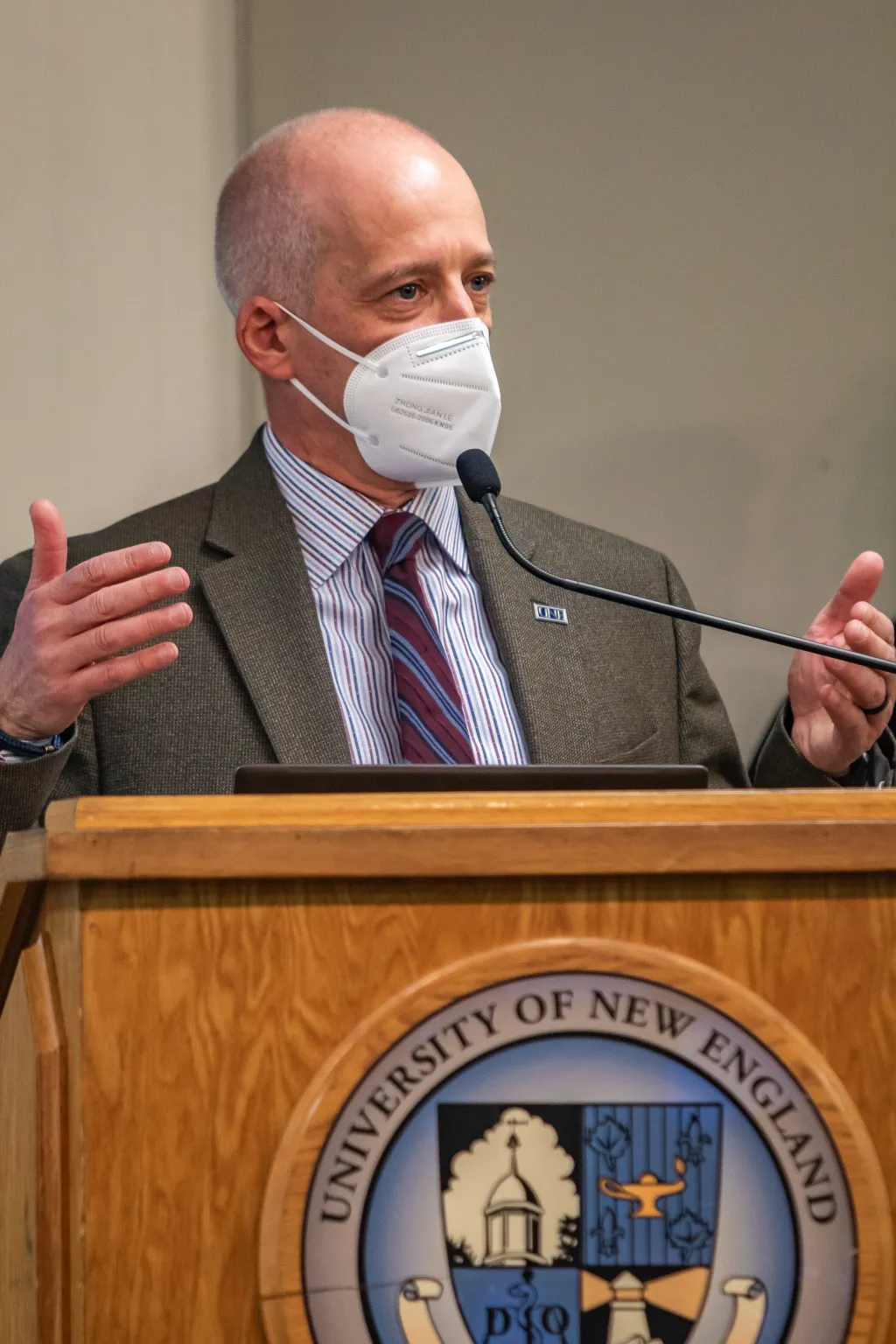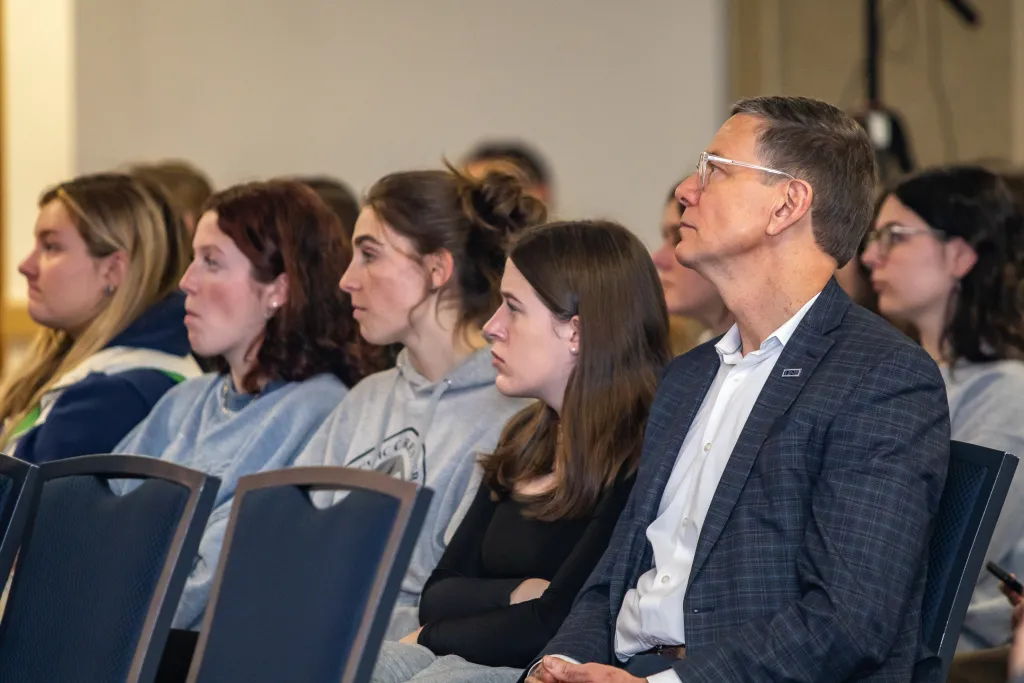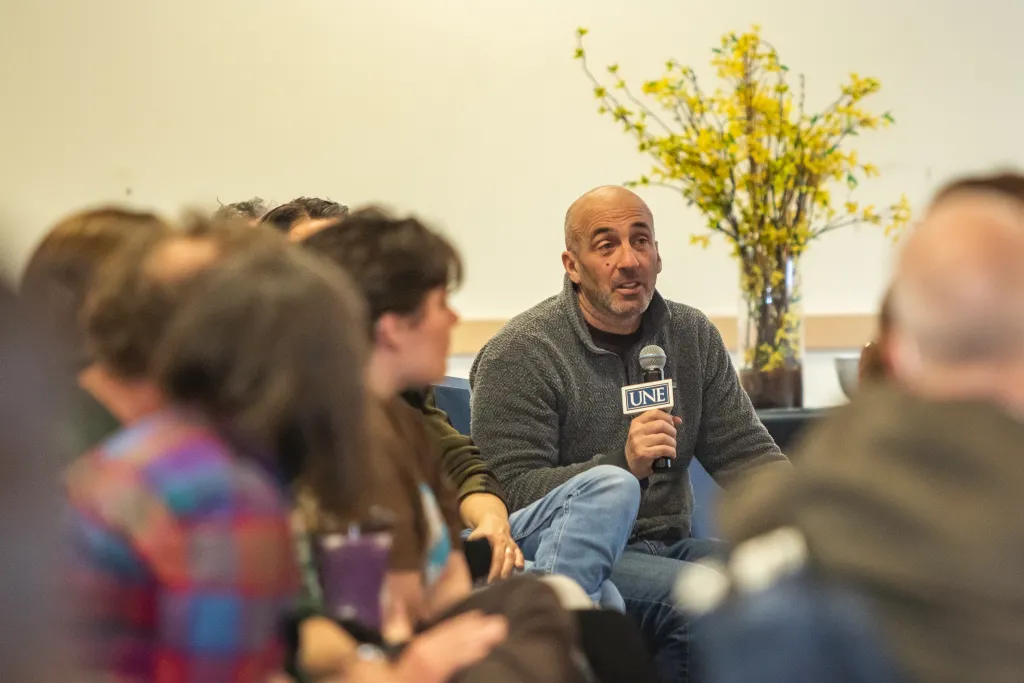The hope and despair of nature, through Nikki Lindt’s eyes — and ears
Annual Connections Lecture welcomes prominent artist to discuss the unseen world

The University of New England welcomed prominent New York City-based artist Nikki Lindt as the speaker for its annual Connections Lecture series on Thursday, March 9. Her talk, “Recording the Unseen World Beneath Us,” explored her work as an interdisciplinary multimedia artist who explores the dichotomies between the natural world and the way humans interact with it.
The Connections Lecture series, hosted by UNE’s College of Arts and Sciences, brings together leading thinkers from multidisciplinary perspectives. It encourages attendees to engage with scholarly work beyond the classroom with the notion that true understanding comes from breaking down disciplinary boundaries.
“This annual lecture underscores that learning is not so much what you’re studying, but how what you’re studying interacts with what others are studying, and that brings our curriculum to life,” CAS Dean Jonathan Millen, Ph.D., said in his opening remarks. “That’s what excites me most about being a dean.”
Brought up between New York and the Netherlands, Lindt’s artistic work examines climate change, environmental stewardship, and relationship to place. She works primarily in the mediums of painting, video, and underground sound on long-term projects, often collaborating with scientists, philosophers, social scientists, sociologists, and others.
Lindt has participated in residencies at many field stations, including the Toolik Field Station in Alaska; the Abisko Scientific Research Station in Sweden, a project of The Swedish Polar Research Secretariat; the Hubbard Brook Experimental Forest; and the Urban Field Station in New York City.
In 2022, her work was the subject of a feature on CBS Sunday Morning.
In her lecture, held in UNE’s Biddeford Campus Center, Lindt discussed her recent projects, including “The Underground Sound Project,” an audio project consisting of recordings taken underground and underwater primarily in the parks and waterways of New York City. Lindt played several of the recordings, bringing new life to the unseen world below.
“In this world beneath our feet, even a snowflake lands with a thud,” she remarked.
Lindt discussed two themes often seen in her work, the first of which is solastalgia. As opposed to nostalgia, the sadness experienced when leaving a familiar place, solastalgia is the sadness or melancholy experienced “when a place leaves you,” she explained. Climate change, pollution, or urbanization can all contribute to solastalgia as a place morphs or vanishes over time.
Lindt also discussed the theme of Sehnsucht, a German word that generally describes a longing for something unattainable. Lindt used the phrase to characterize both the “hope and despair” of nature as it undergoes radical change due to warming temperatures while continuing to adapt and flourish in new ways.
Lindt concluded her talk in saying that global environmental and social issues constitute a “time like no other.” She stressed interdisciplinary collaboration as a way to address these pervasive issues.
“I encourage all of you to consider collaboration in your future, whether it’s just great conversations within someone who comes from a different perspective, field, or place, or whether it’s within your own field of work,” she remarked. “These types of exchanges will help create communities that better understand one another, open us to the ideas of others, and will spark innovative ways of thinking that will help push us toward a brighter future. You are all a part of this future, so let’s work together to make it a positive one.”


